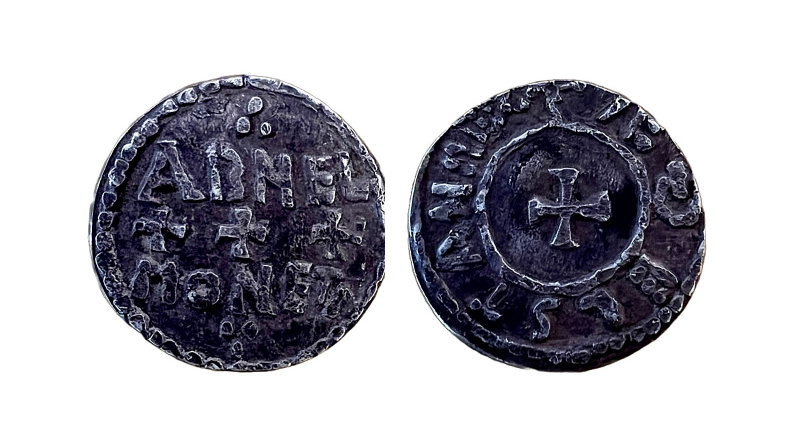Halfpenny of Aethelstan forgery?
This coin was sent in by Dave Whalley on behalf of a detectorist. It was found about ten years since and just put aside in a garage with many other finds. I was asked for my opinion on it.
Firstly, the coin is 14mm in diameter and the design points towards it being Anglo-Saxon/Viking. At 14mm in diameter it must be a halfpenny and as such it would be of great rarity.
There is a cross in the centre of the obverse and the surrounding legend reads +ÆÐELSTAN REX (the bar on the upright of the letter D turns it into TH). On the reverse is the name of the moneyer, ABNEL, with a trefoil above. Under the moneyer’s name are three crosses and below them is MONETA with a trefoil underneath. All this adds up to the coin being a two-line type of Aethelstan (AD 924-39).
Coins of Aethelstan are usually well struck and of really fine style but the dies used to produce this coin are very crude. Could it simply be a contemporary or modern forgery? Well, I have only images and a limited amount of information to go on so I can’t be certain. There is another possibility: it might be a Viking copy.
In my old edition of volume I of J. J. North’s English Hammered Coinage coin number 14 on plate IX is a Viking copy of a two line type penny of Aethelstan. The dies used to strike this coin are as crude as those used to produce the coin pictured here.
If it is genuine then besides being of great rarity this early halfpenny would sell for a very high price. Unfortunately, there is a major anomaly. Halfpennies of this period usually weigh close to 8 grains but I was told that this specimen weighs one gram, which is 15.43 grains. Therefore, it is roughly twice the weight it should be, which casts significant doubt on its authenticity.
Valuation Service
If you would like your coin identified or valued, please read about my valuation service and contact me


An Edward the Confessor small flan penny is 14mm in diameter and weighs about 1 gram (I have 2 and have checked them). Obviously this isn’t an Edward the Confessor coin, but I don’t agree with the comments that the weight/size are necessarily wrong. I can’t find anything on the internet or the books I have to give the Athelstan coin a positive ID (possibly North 668? or Spink 1104A?). Why would somebody make a fake coin of one that doesn’t exist? It’s all very intriguing. The moneyer is also correct for the king and the period. Your comment on a viking copy might well be correct, but again the copy must be based on some coin in use at the time?